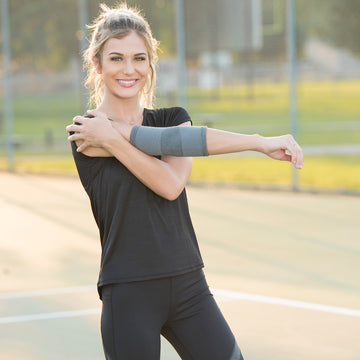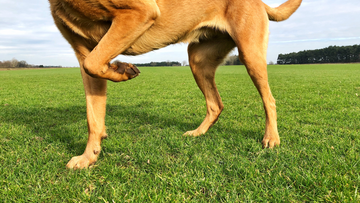Springtime is here! This also means lots of wet and mucky turn out areas are here too. A common hoof ailment, known as thrush, thrives in these wet environments. Thrush is a bacterial infection that occurs in the tissue of the frog, the V-shaped structure located between the sole, wall, and bars in the heel area of the hoof. You will likely know it when you see — and smell — it. The pungent, tar-like black discharge collects in the sulci, or grooves, along the sides of the frog, the triangular structure that covers about 25 percent of the hoof’s bottom. Thrush is caused by the lack of proper foot care, resulting in a buildup of mud and manure that prevents air from getting to the frog.

Thrush is extremely common and is usually not a problem when treated promptly. If it is left untreated and progresses into the sensitive tissues, the infection can move into the deeper grooves, causing the frog to deteriorate and resulting in great pain for the horse. In severe cases, lameness is possible. Thrush needs a few things to survive – constant moisture, an anaerobic environment and the presence of fungi, bacteria, and other microorganisms.
To prevent thrush, you can minimize these conditions by doing the following:
- Keep stalls and paddocks clean - Manure and urine give bacteria a place to live. Be sure to clean out stalls and turnouts daily to prevent the bacteria from growing.
- Dry footing - April showers are great for several reasons, but they also keep your turnouts wet. Bring your horses in the barn to give their hooves a chance to dry out rather than standing in mud and water all day long. You can also spread gravel in wet paddocks to give them a dry place to stand.
- Pick out your horse’s feet - Pick out your horse’s feet daily. This should be done regularly anyway, but especially more often when it is wet outside. Inspect the hooves for foreign objects, such as rocks or nails, at the same time.
- Keep the farrier coming - Stick to a schedule with your farrier. Regular visits from your farrier will help keep your horse’s feet healthy and sound.
- Avoid acidic footing if possible - Chipped or shredded wood shavings are common bedding choices. However, some trees such as conifers are more acidic than others. As these materials decompose in wet paddocks, they can change the pH of the soil and become home to the bacteria that causes thrush. At all costs, avoid these types of footing if possible.
- Regularly exercise your horse to ensure consistent and healthy circulation in the hooves.
Thrush is 100% treatable, but it is easiest to prevent from the start! Follow these few tips to help avoid thrush in your barn!
 Thrush is extremely common and is usually not a problem when treated promptly. If it is left untreated and progresses into the sensitive tissues, the infection can move into the deeper grooves, causing the frog to deteriorate and resulting in great pain for the horse. In severe cases, lameness is possible. Thrush needs a few things to survive – constant moisture, an anaerobic environment and the presence of fungi, bacteria, and other microorganisms.
Thrush is extremely common and is usually not a problem when treated promptly. If it is left untreated and progresses into the sensitive tissues, the infection can move into the deeper grooves, causing the frog to deteriorate and resulting in great pain for the horse. In severe cases, lameness is possible. Thrush needs a few things to survive – constant moisture, an anaerobic environment and the presence of fungi, bacteria, and other microorganisms.






















